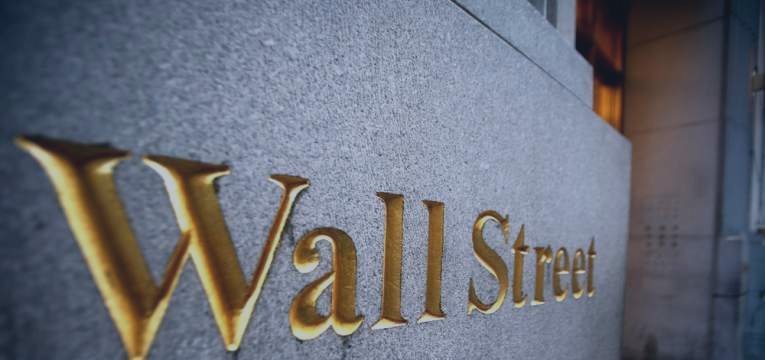
Forbes:There's No 'There' There With The Latest 'Deflation' Scare
Not surprisingly, the recent stock-market declines have unearthed all manner of commentary as to the cause. A report about slowing growth in Europe from the discredited IMF was laughably fingered by some as the driver, the Ebola scare oddly entered the reporting of others, but most prominent as the presumed source of market uncertainty has been the alleged threat of ‘deflation.’
Readers can relax. There’s no ‘there’ there. Figure the vast majority of commentators and economists don’t know what deflation is in the first place. To them, and this includes our mercifully departed former Fed Chairman Ben Bernanke, deflation is “falling prices.” The latter will supposedly cause individuals to consume less, and because it might, must be avoided. Who cares that no act of saving ever subtracts from demand, let alone that savings have and always will be the source of all economic advancement? To the Keynesians who populate the fraudulent economics profession, falling prices are the author of bread lines.
Who cares also that falling prices are the norm in any advanced economy? Apple AAPL +0.37%’s modern renaissance during which it became the world’s most valuable company occurred alongside it relentlessly cutting prices on its own goods. This didn’t scare away consumers, nor did aggressive cost cutting from Henry Ford render his eponymous car company bankrupt. John D. Rockefeller famously cut costs on the way to the world’s greatest fortune. To put it very plainly, falling prices are a happy signal of a competitive, dynamic economy. “Economics” is once again a fraud, and the ‘deflation’ that scares those who practice the astrology is not deflation.
Deflation is the opposite of inflation, and inflation is a decline in the value of money. Plain and simple. Forget price indices like CPI that can be engineered to reflect anything the designer desires them to, inflation and deflation are monetary phenomena.
Gold has historically been used to divine a sense of either mainly because the commodity itself has forever been known for its stability. Gold’s price doesn’t change much, rather the floating dollar and other currencies in which gold is priced change in value. Money’s value in a sane world would be constant (this was the norm until 1971) in terms of the constant that is gold. The yellow metal’s constancy remains the most reliable signal of the dollar’s weakness, strength, or best of all in a rational world, the greenback’s unchanging definition. Since 2000 gold has told a rather negative story; one that carried with it very negative economic implications.
When the 2000s began the dollar bought roughly 1/280th of an ounce of gold, by August of 2011 a dollar bought 1/1900th of an ounce, and today a dollar buys 1/1230th. What these prices tell us is that artificial indices of ‘inflation’ created by the drones at the BLS have papered over an economy-sapping decline in the value of the dollar over the last 14 years.
The decline hurt the economy simply because investors fund all the economic experimentation that leads to company and job creation. Information powers any economy forward, and investment is the author of the information. Investors are buying future dollar income streams when they invest, so a falling dollar has been an investment and information deterrent since the new Millennium began.
A logical reply would be that the dollar is a great deal stronger than it was in August of 2011. To some, this is the signal of ‘deflation.’ In truth, the stronger dollar signals an arrest of the aforementioned economy-sapping inflation that reoriented investment toward the wealth that already exists (think land, housing, art, rare stamps, gold, oil), and away from the stock and bond income streams representing wealth that doesn’t yet exist. Economies grow based on the discovery of new information, but a weak dollar these last 14 years has made the experimentation that unearths new information a fool’s errand. Why commit capital to new ideas that are by definition highly risky if any potential reward will come back in devalued dollars?
Furthermore, the ‘deflation’ that some point to as the cause of presently rocky stock markets has long been with us. The dollar started to correct upward as mentioned in 2011, and gold has tautologically been in decline ever since then. It fell all the way to $1,300 by the spring of 2013, and has been in the $1,200 range since the summer. Markets never price in the present, they’re always discounting the future, so if ‘deflation’ of the monetary variety were in fact the cause of presently difficult markets, they would have corrected long before now. Instead, stock markets have been rallying impressively as the dollar’s value has risen. With good reason.
For one, investors are once again buying future dollar income streams
when they invest. In that case, a rising dollar has served as a magnet
for investment in future, as opposed to present wealth. It’s no surprise
then that a long dormant Silicon Valley has been revived amid the
dollar’s rise, along with a much healthier IPO market.
Second, it can’t be forgotten what a weak dollar meant for the
economy not just in the 2000s, but also in the 1970s. A weak dollar is
not only an information repellent, it also represents a blast to the
past in terms of economic activity. The problem is that economies grow
based on the relentless shedding of formerly important work.
But in the ‘70s and 2000s, a weak dollar rendered commodities like oil, wheat, soybeans and meat that are priced in dollars ‘expensive.’ The result was a massive reorientation of always limited economic resources into farming (a profession advanced countries happily shed at the end of 19th century) and energy exploration; oil something that economically backwards countries like Iran, Nigeria and Equatorial Guinea have no trouble extracting and selling into the world market.
What took place in the ‘70s and ‘2000s was the sporting equivalent of Green Bay Packers quarterback Aaron Rodgers handing over the quarterback’s playbook in favor of work as a wide receiver. No doubt this great athlete could with time figure out the position on the way to passable success, but only at the expense of being arguably the world’s greatest quarterback.
Applied to the U.S., the ‘70s and ‘2000s were horrid, relatively painful periods in which a weak dollar drove limited resources into prosaic low-value energy extraction work that is ably done in countries like Venezuela; much of it at the expense of investment in the ideas and technology concepts of the future that very few in the world are capable of. A weak dollar robbed the ‘70s and ‘2000s U.S. economy of what it was best at, and because it did it’s no surprise that both periods were marked by malaise. We migrated toward work that anyone can do, and that’s an investment negative.
Deflation? Not really. In truth, we’ve over the last couple of years
experienced an economy-reviving arrest of an inflation that drove us
into the investment and work of yesterday. This isn’t something to
blanch it, it’s something to embrace. Indeed, a reversal of the ‘70s
inflation is what made the ‘80s and ‘90s economic boom so profound (gold
declined 52% in the ‘80s, and 29% in the ‘90s), and it’s what will
similarly make the next boom so grand. That’s true unless the
deflationists have their way, the dollar is once again devalued, and
investment remains stuck in the work of the past.
![[+96% Profit in 10 Months] 100% Automated NAS100 Strategy 'ACRON Supply Demand EA' [+96% Profit in 10 Months] 100% Automated NAS100 Strategy 'ACRON Supply Demand EA'](https://c.mql5.com/6/983/splash-preview-765084.png)

